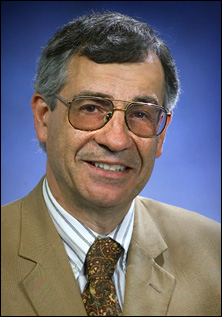Message from Steve Vigdor
January 16, 2013

Dear RHIC Users,
I am now one of you, having retired from BNL at the end of December. I am confident RHIC progress and affairs are being left in very capable hands under Berndt Mueller as the new ALD and Thomas Roser and Tom Ludlam continuing in their roles as Chairs of the Collider-Accelerator and Physics Departments, respectively. During the Spring semester, while Berndt still has commitments at Duke, David Lissauer will serve as the acting ALD at BNL, but with Roser and Ludlam as Points of Contact for RHIC-related issues. I will no longer lead RHIC efforts, but I will still be a contributor, both as a user from my Professor Emeritus perch at Indiana University and as a consultant to Brookhaven.
I wanted to take this final opportunity to thank all of you for your passion and efforts on behalf of RHIC science during my five-and-a-half years as ALD for Nuclear and Particle Physics at BNL. It was a great pleasure for me to represent you and to facilitate the scientific and technical breakthroughs that resulted from your research. Together, we accomplished some really fine things, even under sometimes quite uncertain budget conditions. A partial list of major accomplishments since the 2007 Nuclear Physics Long Range Plan was provided in September 2012 to the Tribble Subpanel of NSAC in response to one of their questions of the various labs:
- QGP formation in RHIC collisions confirmed by more definitive nq-scaling of hadron yields & flow, plus early temperature measurement
- Viscous 3+1-D event-by-event hydro + flow power spectrum measurements => clear path to quantify η/s vis-à-vis lower quantum bound
- LHC heavy ion results confirm basic RHIC findings
- Heavy quarks lose energy in QGP at same rate as light quarks
- Anti-hypertriton and anti-helium4 produced at detectable levels @ RHIC
- Gluon and quark spins contribute comparably to overall proton spin
- Forward di-hadron suppression in d+Au consistent w/ CGC expectation
- Development of bunched-beam stochastic cooling leads to order of magnitude improvement in RHIC HI luminosities
- Results from first phase of beam energy scan hint at change from hadronic to quark-gluon degrees of freedom in the lower range of energy accessibility at RHIC
- Charged-particle correlation and identified particle flow measurements reveal subtle preferences consistent with multiple expectations based on the occurrence of QCD sphalerons in QGP matter produced at RHIC
More could be added to this list just based on the new results presented in the past four months. In addition, the steady stream of machine and detector upgrades, with significant installations each summer, has dramatically improved the facility's capabilities since 2007.
To this impressive list of accomplishments, we have added compelling plans for the next decade of RHIC operations and science, and a vision of how to convert RHIC to an Electron Ion Collider in the following decade at manageable cost. Many of you made great contributions to forging this vision of RHIC's future, via contributions to PHENIX and STAR decadal plans, to White Papers and to simulations and designs that informed those documents. The accomplishments and the vision are effectively summarized in the four White Papers the community has prepared for Tribble Subpanel considerations – all are linked from the main RHIC web page (www.bnl.gov/rhic ) under the heading "A Compelling Future for RHIC." I now wait with you to see if the Tribble Subpanel found these plans as essential to the future of U.S. nuclear science research as I do.
One of the clear advantages Brookhaven brings to ensuring RHIC's success is the strong synergy with the vibrant high-energy physics program carried out in the lab. Many of the investments made in that research over the past five years came to spectacular fruition in 2012 with very strong BNL roles in three major discoveries: the Higgs-like boson found at LHC (specifically by the ATLAS Collaboration, where BNL is the host U.S. institution); the first definitive measurement at Daya Bay of a non-zero value of the last neutrino mixing angle 13; mass maps of the distant universe by the BOSS Collaboration via studies of the high-redshift Lyman-α absorption "forest" in light from distant quasars, permitting determination of the universe's expansion rate some 10 billion years ago. In addition, BNL physicists played major roles in finding a path forward for the Long Baseline Neutrino Experiment, providing hope to exploit the large value of 13 to probe CP-violation in the neutrino sector over the coming decades.
2013-3618 | INT/EXT | Newsroom









